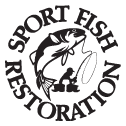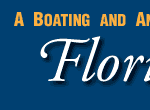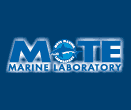CONTACT US:
Florida Fish and Wildlife
Conservation Commission
Fish and Wildlife
Research Institute
100 Eighth Avenue SE
St. Petersburg, Florida 33701
727-896-8626
|
|
|
Mote Marine Laboratory
Tropical Research Laboratory
24244 Overseas Hwy.
Summerland Key, FL 33042
305-745-2729
|
|
|

|
|
This project was funded in part by a grant awarded from Mote Marine Laboratory's Protect Our Reefs Grants Program, which is funded by proceeds from the sale of the Protect Our Reefs specialty license plate. Learn more at .
|

|
|
Additional funding for this project was obtained through the Federal Aid in Sport Fish Restoration Fund.
|
|
|
 |
Florida's state parks, managed by the Florida Department of Environmental Protection, provide boaters and anglers a wealth of opportunities to experience all that the Florida Keys has to offer. Campers can find a place to pitch a tent or park an RV at most of the state parks in the Keys. Canoers and kayakers can also take advantage of the natural beauty these parks have to offer. For the boater, two parks have ramps that help get you into the water quickly. Snorkelers and divers can explore underwater life close to shore or jump aboard a tour boat and head out to one of the reefs. The state parks in the Keys have something to offer anyone on vacation.
For more information about Florida's state parks, please visit the Florida Online Park Guide.
|
John Pennekamp Coral Reef State Park
The first undersea park in the U.S., John Pennekamp Coral Reef State Park encompasses approximately 70 nautical square miles. While the mangrove swamps and tropical hammocks in the park's upland areas offer visitors a unique experience, it is the coral reefs and their associated marine life that bring most visitors to the park. Many enjoy the view of the reef from a glass-bottom boat tour, but visitors can get a closer look by scuba diving or snorkeling. Canoeing and kayaking through the park's waters are popular activities; fishing is permitted in designated areas. Visitors can enjoy walking on short trails, picnicking, or swimming at the beach. The Visitor Center has a 30,000-gallon saltwater aquarium and nature videos are shown in its theater. Full-facility and Youth/Group campsites are available. Beach wheelchairs are available without cost.
|
Lignumvitae Key Botanical State Park
The virgin tropical hardwood hammock that thrives on this island was once common on most of Florida's Upper Keys; most of these forests have been lost to development on other islands. In 1919, William J. Matheson, a wealthy Miami chemist, bought this tiny island and built a caretaker's home with a windmill for electricity and a cistern for rainwater. Today, his hideaway is the visitor center for this island forest. Ranger-guided tours are given twice daily, Friday through Sunday. The park is accessible only by private boat or tour boat. Tour boat services, as well as boat and kayak rentals, are available from Robbie's Marina.
|
Indian Key Historic State Park
In 1836, Indian Key became the first county seat for Dade County. At that time, this tiny island was the site of a lucrative business-salvaging cargo from shipwrecks in the Florida Keys. Accessible only by boat, visitors come here to swim, sunbathe, and hike. Boat and kayak rentals are available from Robbie's Marina.
|
San Pedro Underwater Archaeological Preserve State Park
This underwater archaeological preserve features a submerged shipwreck that is available for diving and snorkeling. Part of a Spanish flotilla, the San Pedro was a 287-ton, Dutch-built ship which sank in a hurricane on July 13, 1733. Her remains were discovered in 1960 in Hawk Channel near Indian Key. After major salvage efforts in the 1960s, all that remains of San Pedro is a large pile of ballast stones covering an area 90 feet long and 30 feet wide. The underwater site has been enhanced with seven replica cannons, an anchor, and an information plaque. Visitors can also appreciate the marine life that occupies the site. The site is located in 18 feet of water, approximately 1.25 nautical miles south from Indian Key. To prevent anchor damage, boaters should tie up to the mooring buoys located on site.
|
Long Key State Park
The Spanish named this island "Cayo Vivora" or Rattlesnake Key because its shape resembles a snake with its jaws open. In the early 20th century, Long Key was the site of a luxurious fishing resort that was destroyed during the Labor Day Hurricane of 1935. Today, visitors can explore this island by canoeing through a chain of lagoons or hiking two land-based trails. The Golden Orb Trail leads visitors through five natural communities to an observation tower that provides a panoramic view of the island and its profusion of plant and animal life. Some of the best bonefishing in the Keys is found here. Full-facility campsites overlook the Atlantic Ocean.
|
Curry Hammock State Park
Curry Hammock is made up of a group of islands in the Middle Keys, with public access to swimming, a playground, picnic tables, grills and showers on the ocean side of Little Crawl Key. The hardwood hammocks found on these tropical islands support one of the largest populations of thatch palms in the United States. Mangrove swamps, seagrass beds and wetlands provide vital habitats for tropical wildlife.
|
Bahia Honda State Park
Henry Flagler's railroad to Key West turned the remote island of Bahia Honda Key into a tropical destination. Today, the island is home to one of Florida's southernmost state parks, known for beautiful beaches, magnificent sunsets and excellent snorkeling. Visitors can picnic on the beach and take a swim or relax and enjoy the balmy sea breezes that caress the shores year-round. Anglers can fish from shore or bring a boat and launch at the boat ramp. Kayaks and snorkeling gear can be rented. Boat trips to the reef for a snorkeling excursion are available. Bahia Honda is an excellent place to see wading birds and shorebirds. The nature center introduces nature lovers to the island's plants and animals. Full-facility campsites and vacation cabins are available.
|
Fort Zachary Taylor Historic State Park
Designated a National Historic Landmark in 1973, Florida's southernmost state park is popular for recreation, as well as U.S. military history. The fort was one of a series built in the mid-1800s to defend the nation's southeastern coastline. Completed in 1866, Fort Zachary Taylor played important roles in the Civil War and Spanish-American War. Guided tours of the fort are available daily.
|
|
If you are out snorkeling, diving, fishing, paddling, or boating and see anything that may be unusual or out of the ordinary in Florida Keys waters (including lionfish), please record the location, date, and time, and contact the Marine Ecosystem Event Response and Assessment (MEERA) project. They can be reached by phone (305-395-8730), e-mail, or online.
If you have any questions, comments, or suggestions about this Web site, please e-mail us at Boating_Guides@MyFWC.com.
Would you like to receive notices of changes to this Web site and the Boating and Angling Guides to the Upper, Middle, or Lower Keys? If so, please e-mail us and include SUBSCRIBE-KEYS in the subject line.
|






















